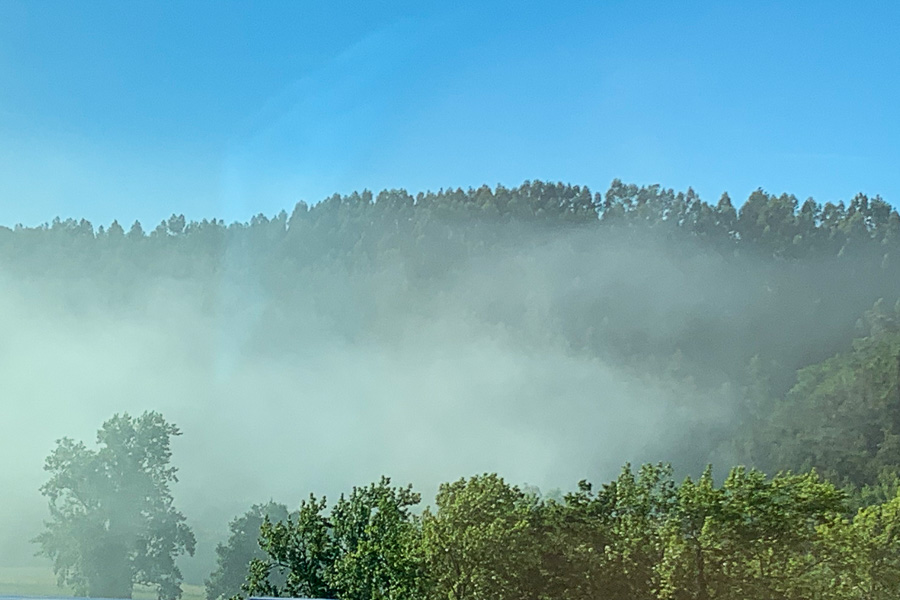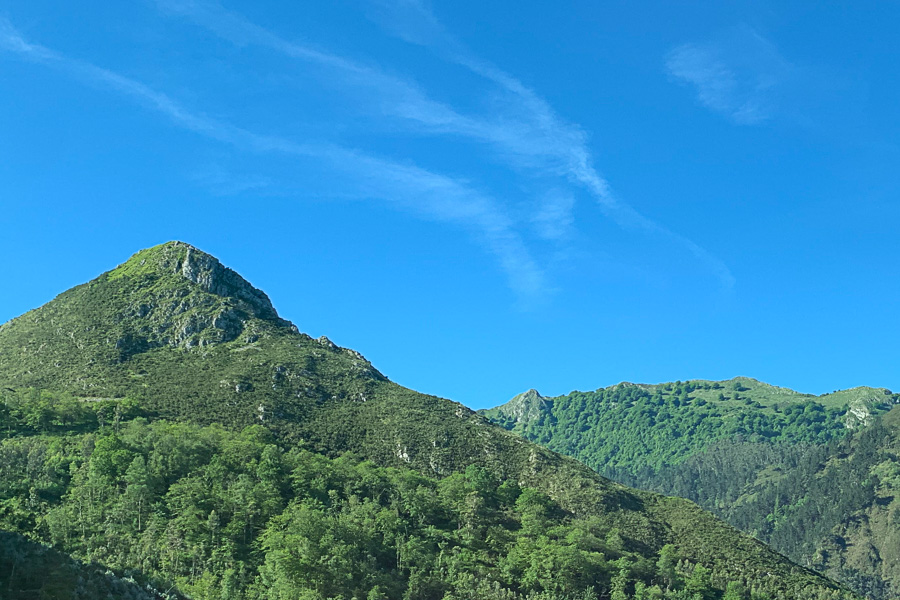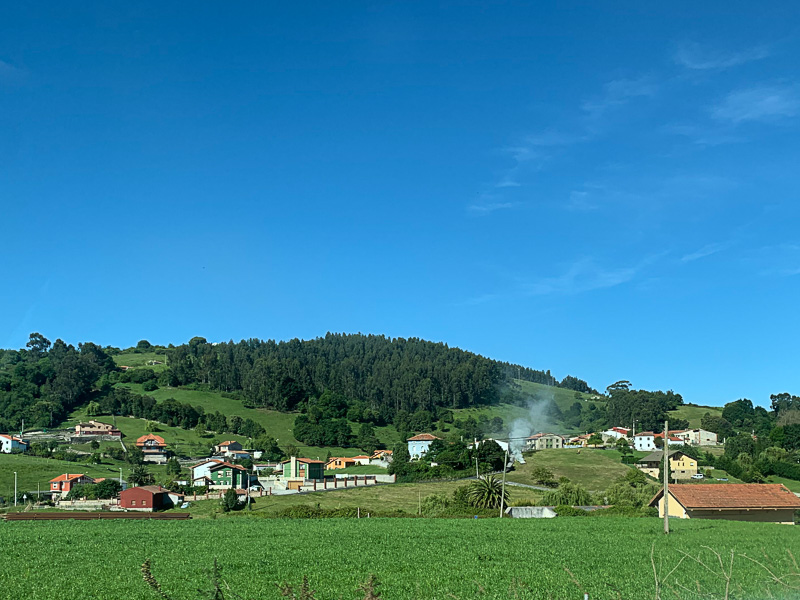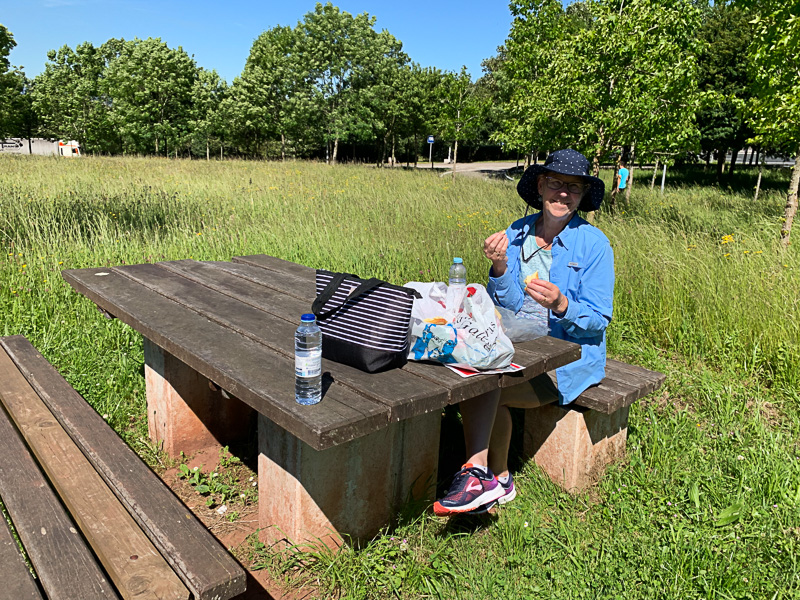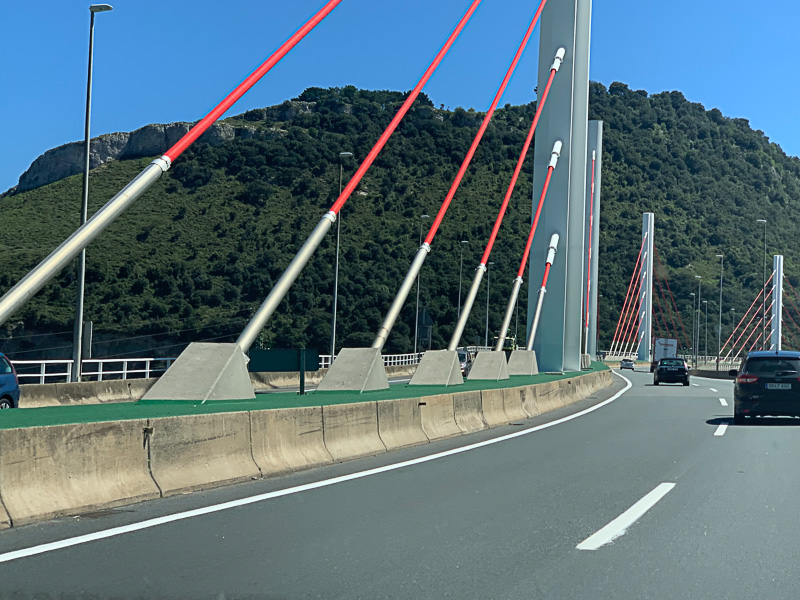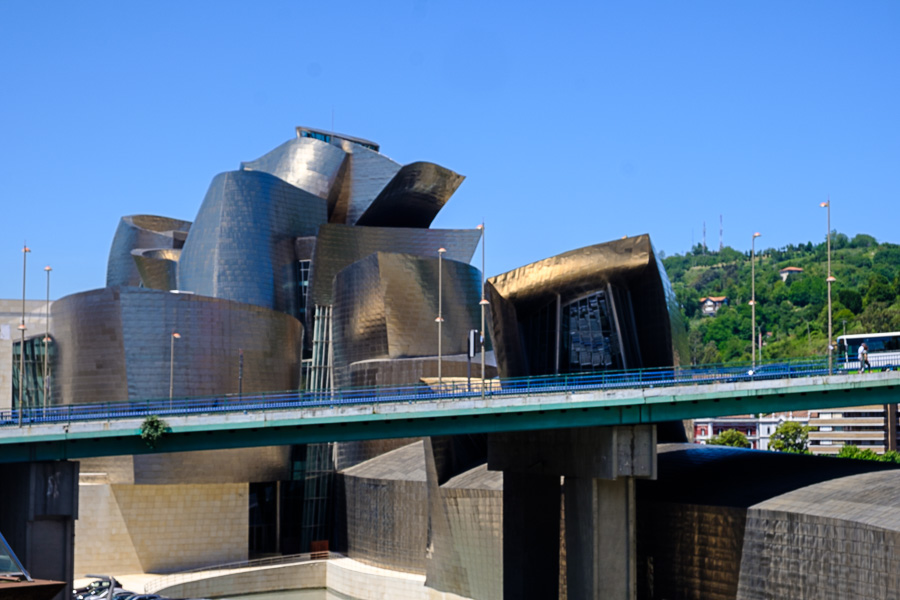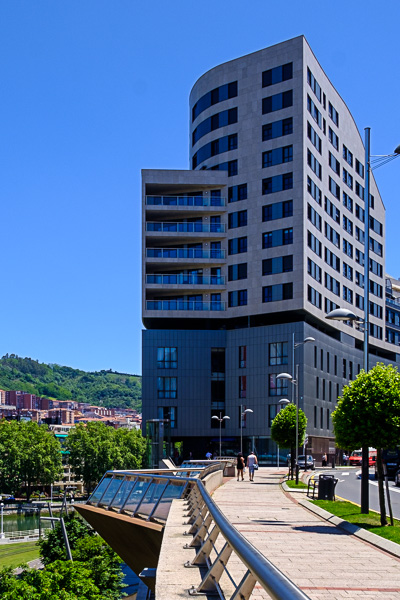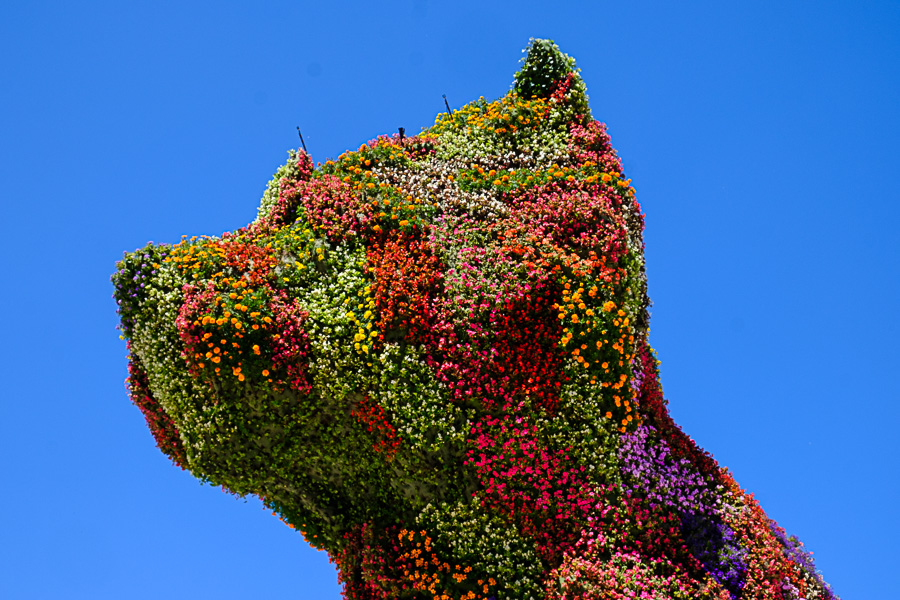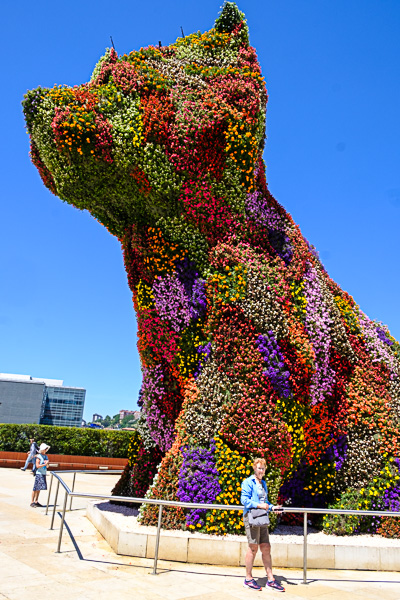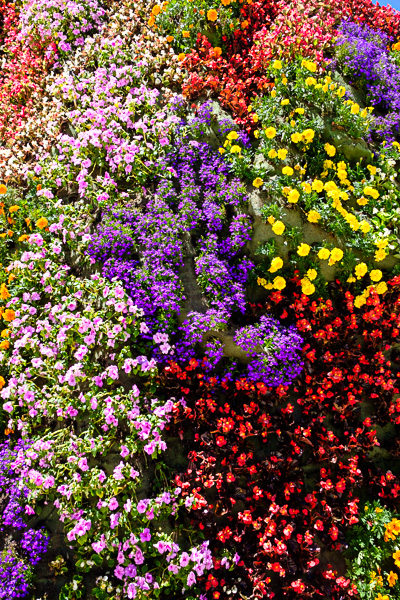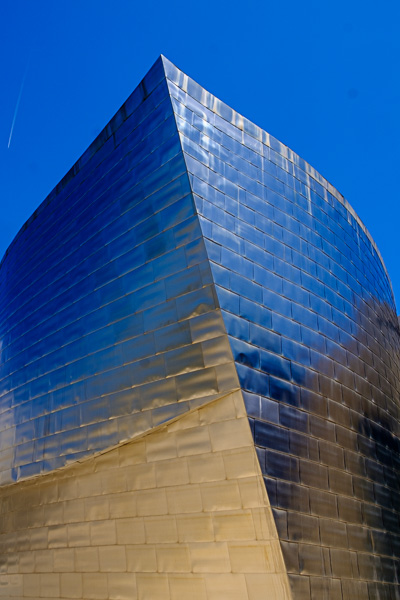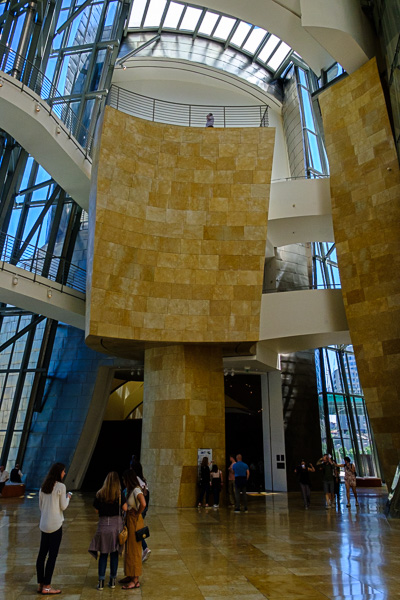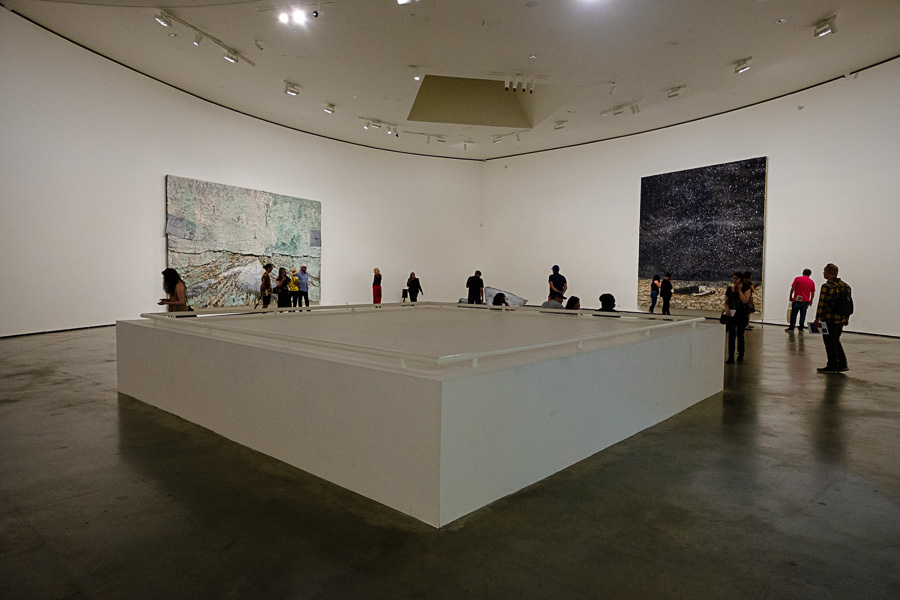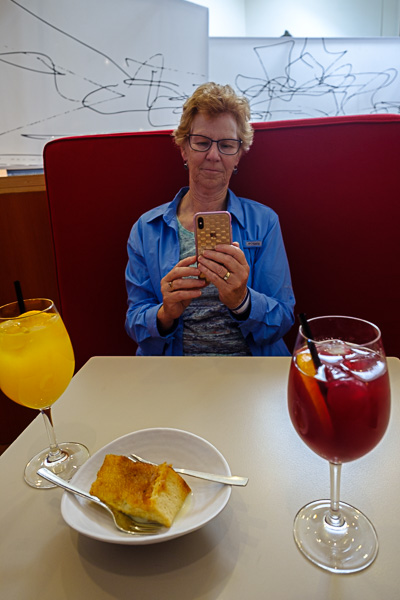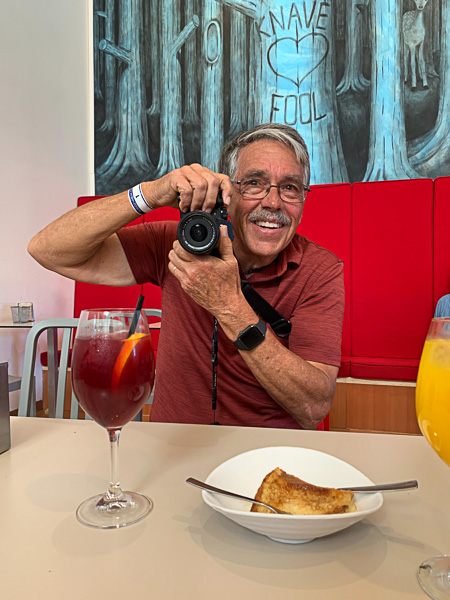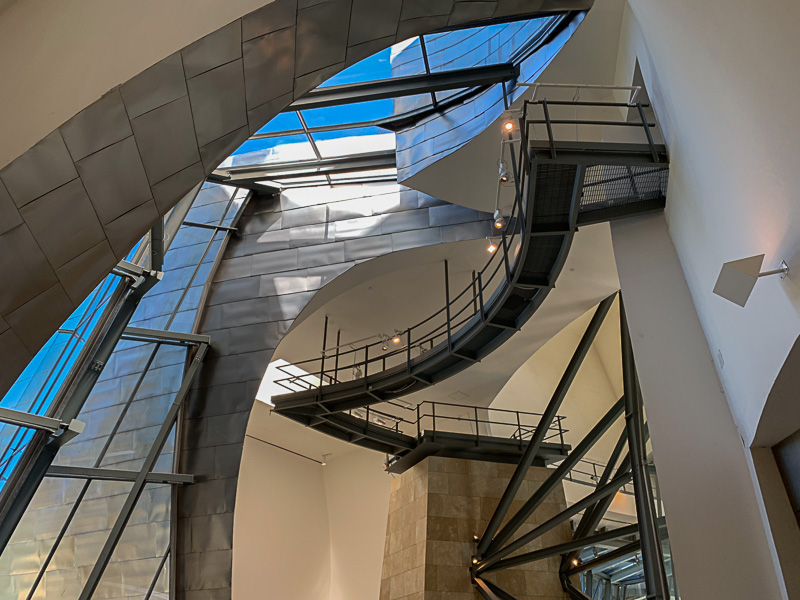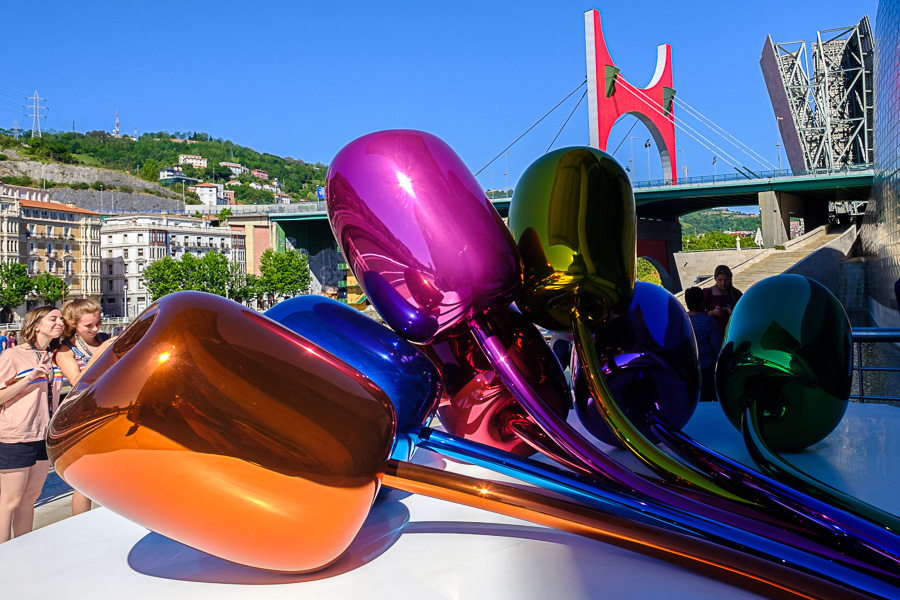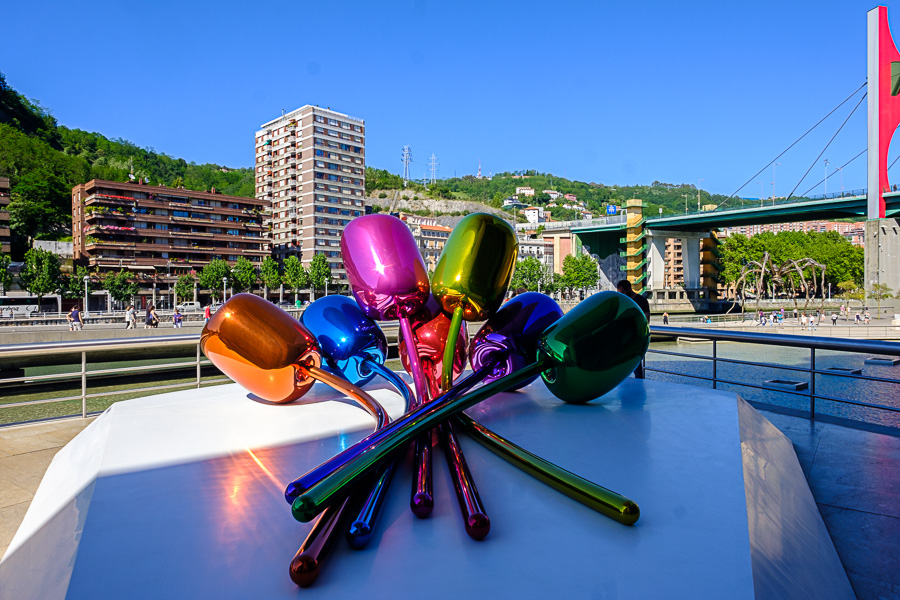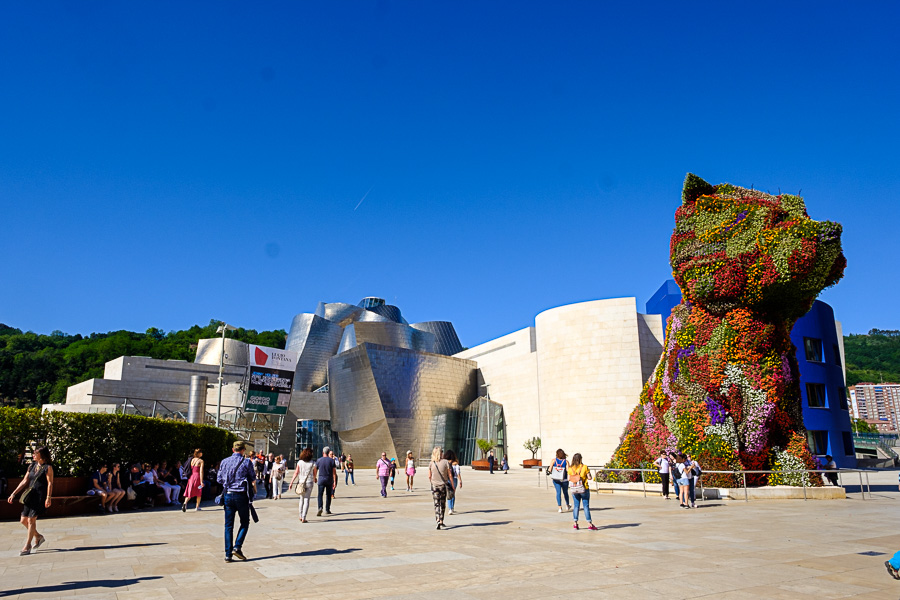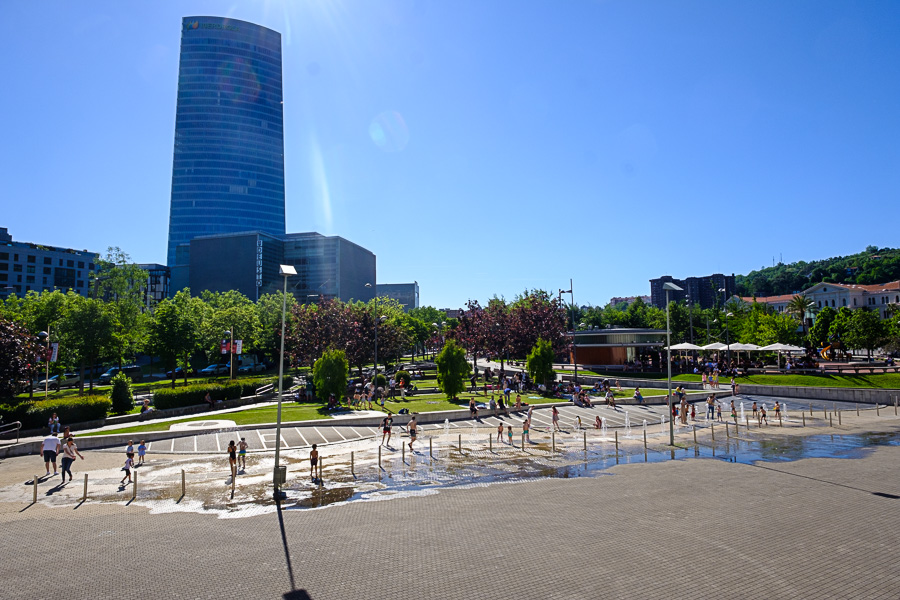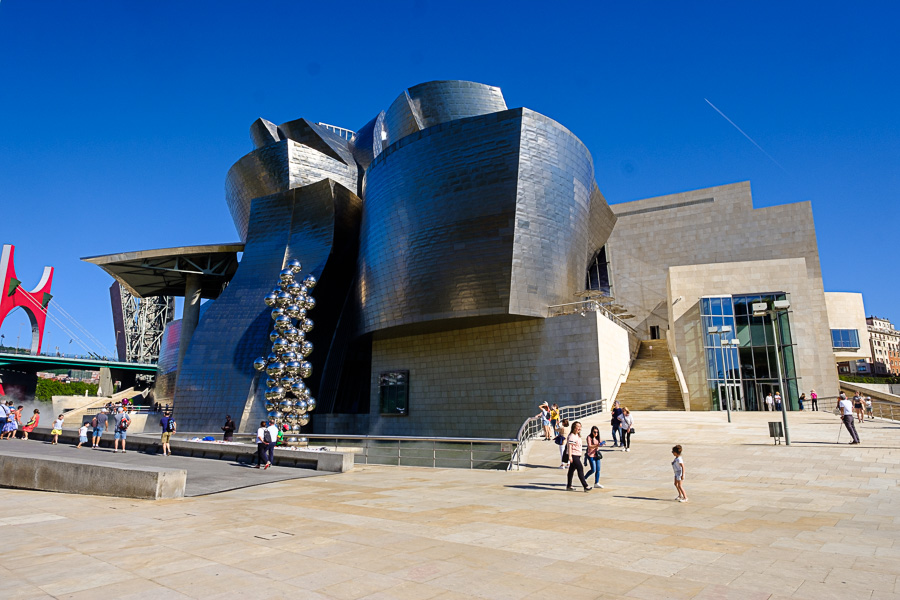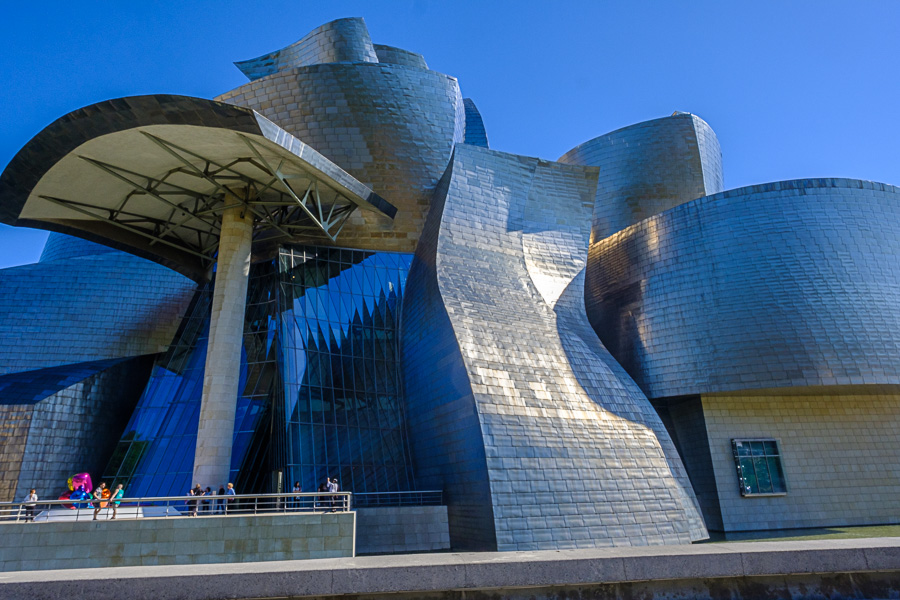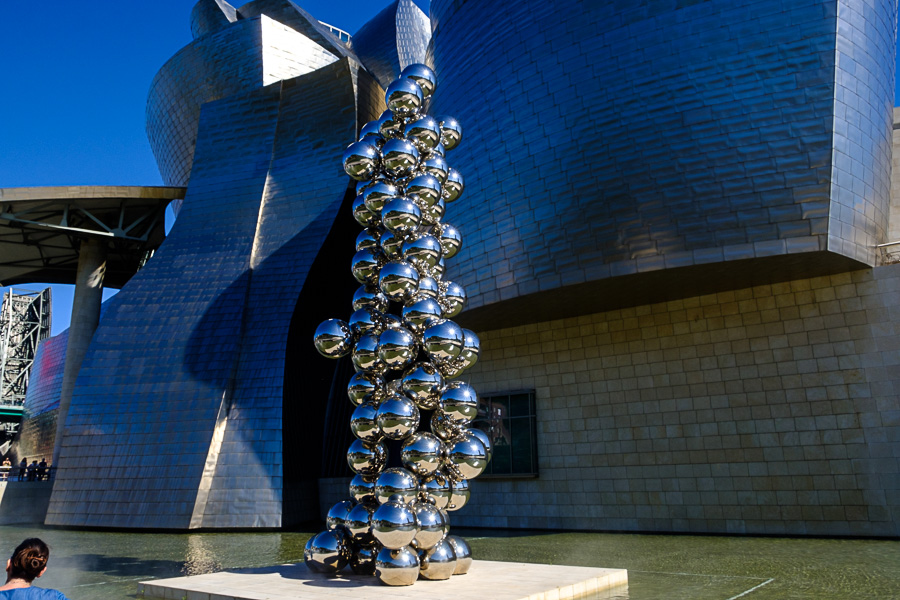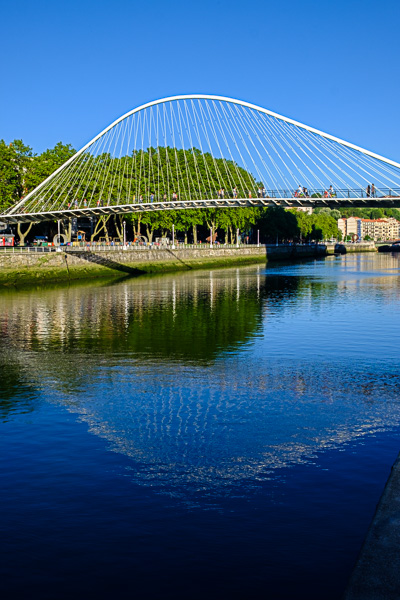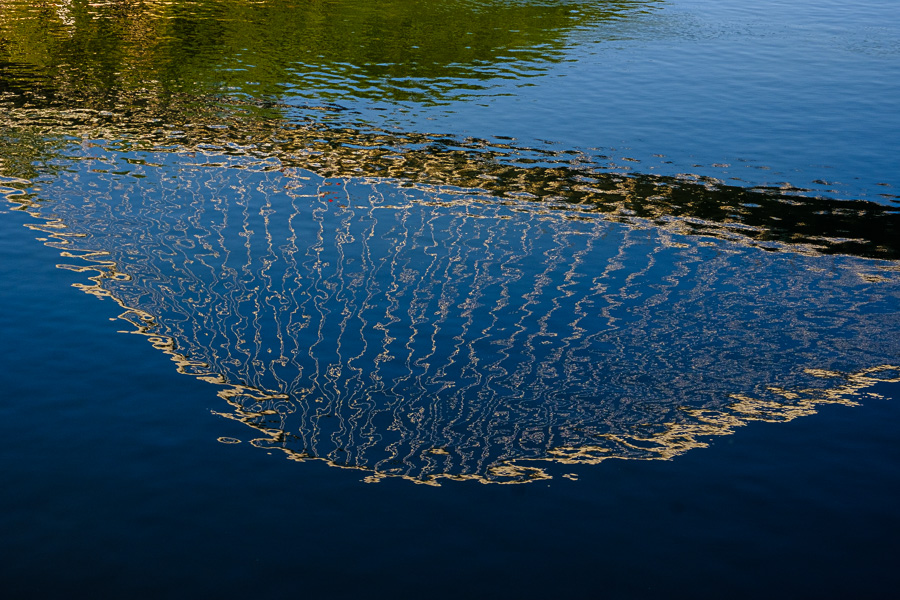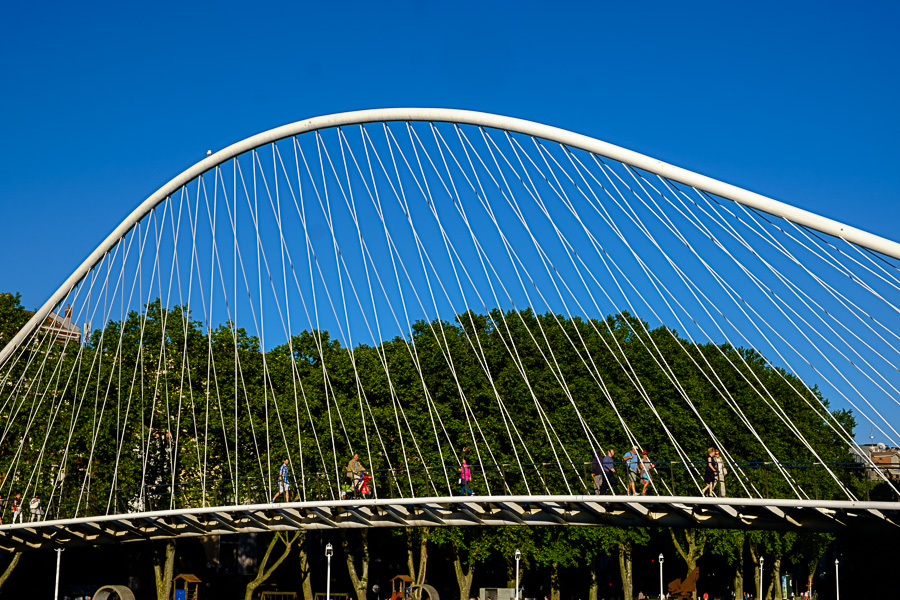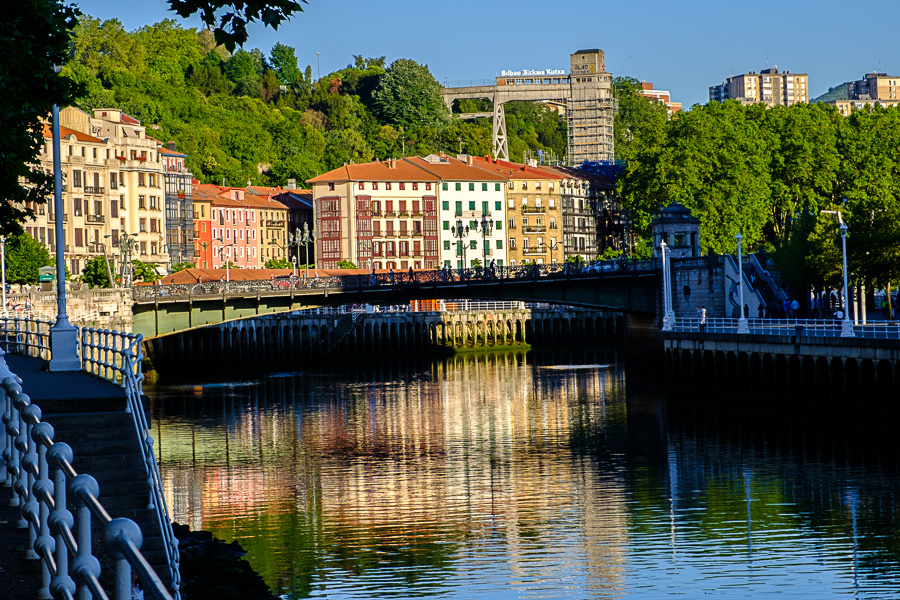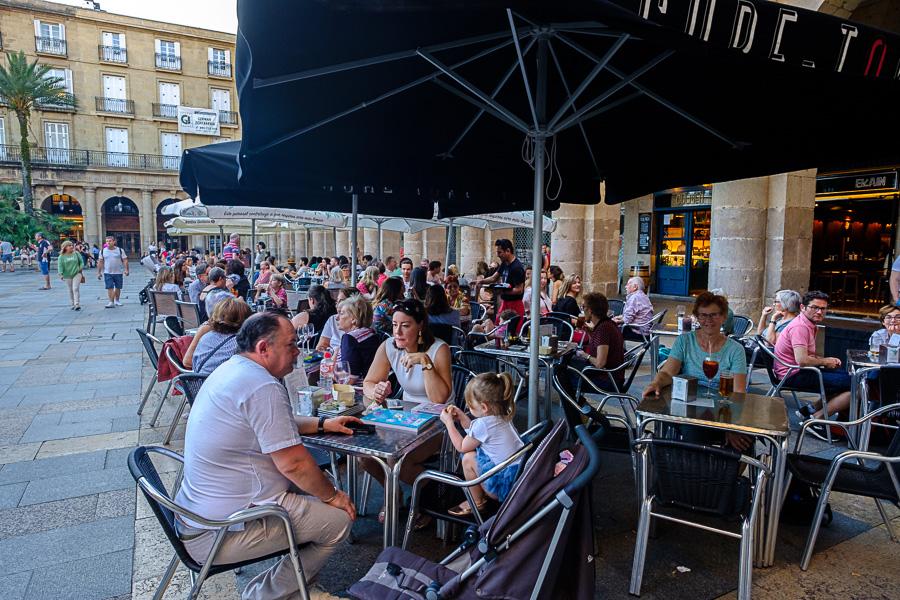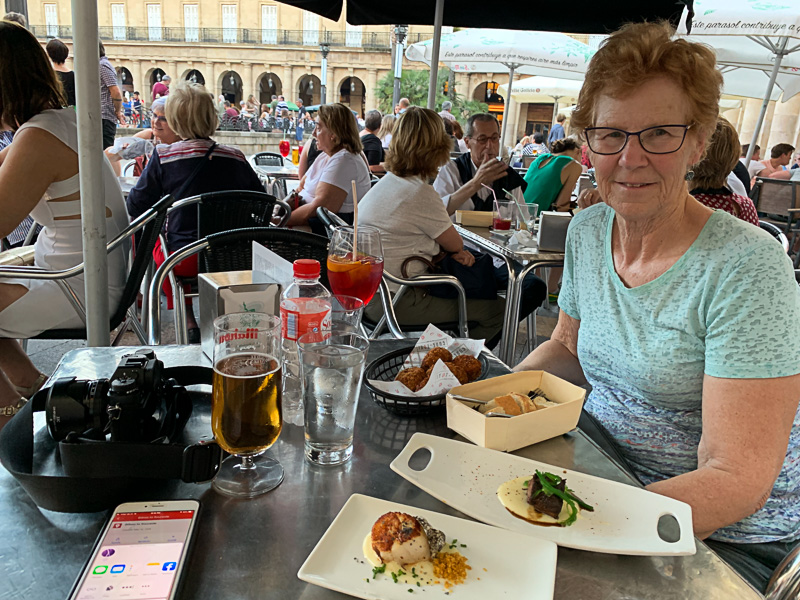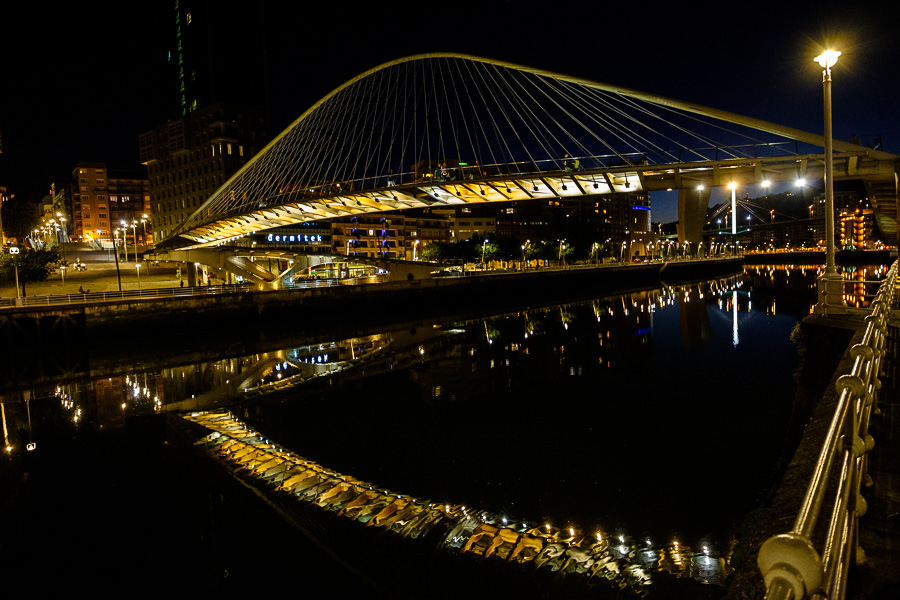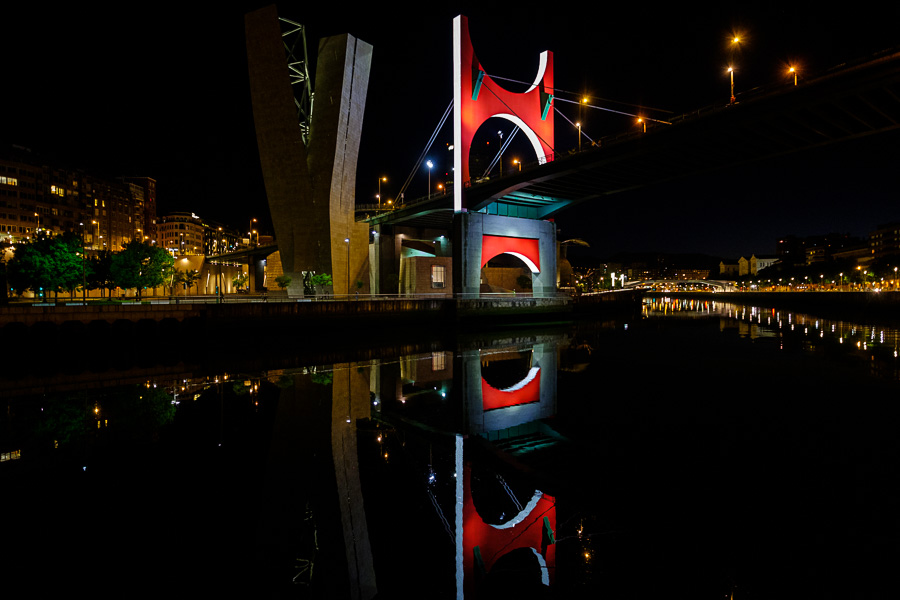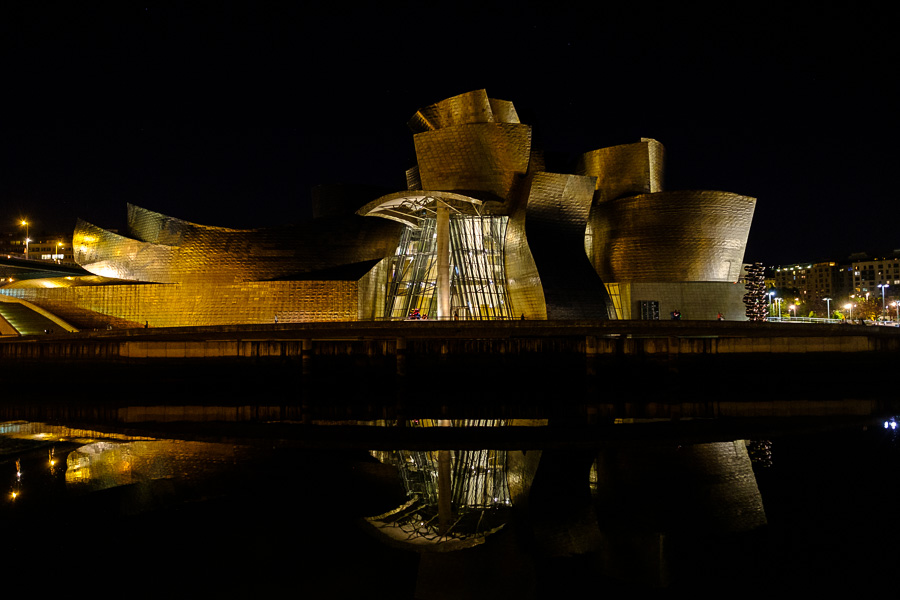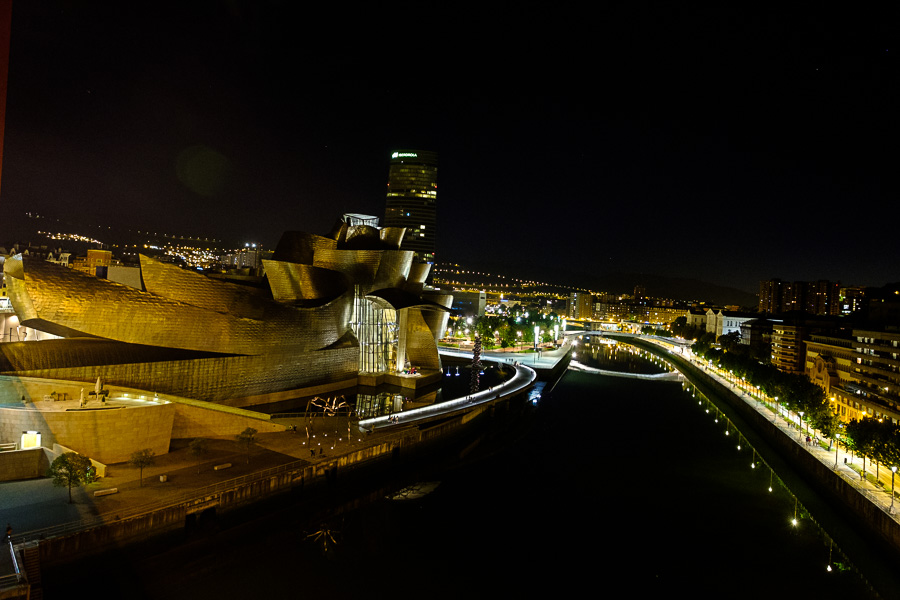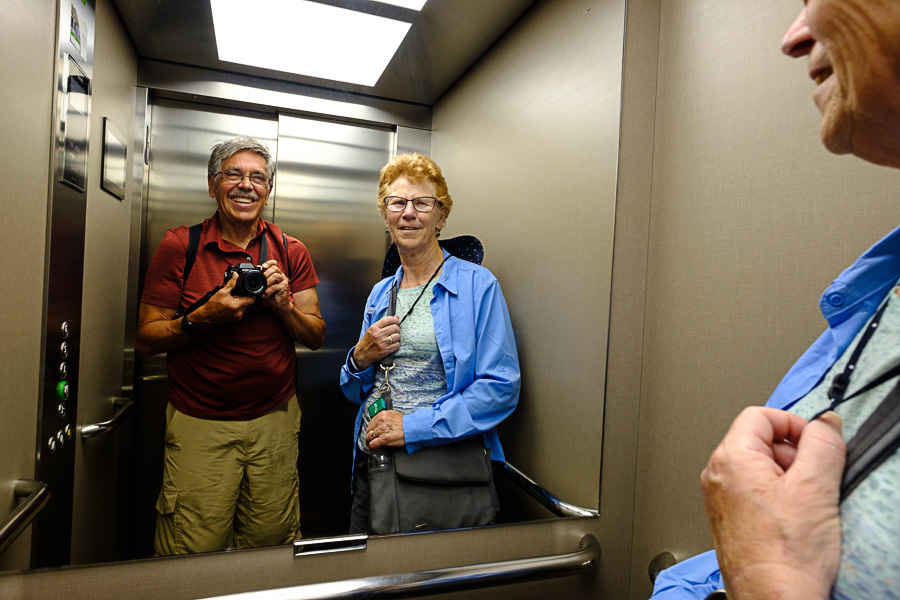We’ve discovered that a glass of wine takes the rough edges off of our day. Another thing we’ve discovered is that a glass of sangria and a sticky gooey something or other at 4:00 PM is a sure fire sleep inducer. It’s now 6:30 PM and Judy’s asleep and I’m typing while fighting the urge to take my siesta. But your loyal ink-stained scribe will type on.
We’ve done the Guggenheim or at least we’ve absorbed as much as we can in four hours. Of course, the architecture of the building is what I, at least, came for and it lived up to my expectations. If you can’t make it to see this one, go to Minneapolis and visit the Weisman Art Museum. It’s got the same Frank Gehry look and its own collection of modern art, just like the Guggenheim. What the Guggenheim has is Basque culture and, we’re hoping, Basque cuisine, which we’re planning on sampling in a few hours. The Weisman was completed in 1993 and the Guggenheim in 1997 so depending on how you look at it the Guggenheim is a mere copy of the original or; the Weisman was the prototype and that Gehry worked out the kinks before building the final version. I’ll let the pictures show what it looks like; describing it is impossible.
Equally impossible is describing in words the art we saw today. It’s even harder to describe in pictures because the docents were plentiful and a mean looking bunch who pounced with amazing speed on anyone who pulled out a cell phone to take a snap, to say nothing of what I got with my Fuji. We did get a few when they weren’t watching.
The exhibits were supported by portable listening devices with commentary on the artists’ work. The one general observation I’d make is this: Every artist in the Guggenheim had a purpose, an idea, a message in mind. Every stroke of paint, every chisel of sculpture, every element of every piece was deliberate. With modern art, more so than with “regular” art, the artist leaves it up to the viewer to find the work’s message. And because we’re all different and come to the work with different perspectives, life experiences and attitudes the message we uncover is often not what the artist had in mind. But that’s what the artist was shooting for in the first place – creativity come alive in the mind of the observer.
OK, that’s a retired engineer’s view of art. Here are a few of the artists that caught my eye:
- The Tropical Pharmacyby Allora and Calzadillo is a video of a pharmaceutical plant in Puerto Rico being demolished by a machine whose wrecking ball has been replaced by a large cast iron bell. The title evokes the idea of tropical plants providing lifesaving drugs. But this is the opposite: a major drug factory in the tropics is being destroyed. An accompanying short video shows a pig on a skewer being rotated over a bed of coals. The spit is being turned by an automobile: the spit is connected to a rear wheel and the rear end of the car is elevated. I’m still searching for the meaning behind that one (maybe a dinner hint?).
- Large paintings by the German Anselm Kiefer reflect on Germany’s role in WWII. One theme is a reflection on an earlier philosopher’s statement that every plant on earth is represented by a star in the heavens, thereby establishing the link between the temporal and the infinite (I think).
- Cy Tombly’s nine large paintings inspired by the life of the second century Roman emperor Commodus. This is one where the uninitiated says, “Looks like random splotches of paint to me.” But with a hint from the audio box, each panel depicts a conflict between Commodus and those who would eventually overthrow and kill him. The paintings suddenly have relevance to today’s situation perhaps.
- Andy Warhol’s 150 Marilyns. Warhol made mucho bucks with one painting of Marilyn Monroe, why not 150 variations on that theme spread across a 30+ foot montage. Really effective!
- A four-room collection of still life paintings by the Italian Giorgio Morandi. The idea here is to show how Morandi’s work evolved over the years and was influenced by the great masters of the 16th, 17thand 18thcenturies from France, Italy and of course Spain. It’s hard to imagine how an artist could view a painting of a woman building a house of cards and create a series of still life images depicting four rather ordinary vases in muted, even dark colors. But if you think about it and view the original inspiration, you can see the connection.
- A whole floor of work by Jenny Holzer, an artist and social commentator from Ohio. The works spans everything from simple sketches to sculpture to neon creations to animated light shows, all with a social message. You can view some of her workhere.
The trip over from Gijon was uneventful (well, almost: we spent more than 10 minutes exiting the garage after paying so a rather perturbed man gave me two stern lectures in Spanish about exiting promptly before fixing the problem). The scenery was very nice – again, rolling hills and moderate-sized mountains with occasional glimpses of the ocean. We stopped an hour outside of Bilbao to have our crackers and cheese lunch at rest stop picnic area.
Today marks the midpoint of our trip: 10 days down, 10 days to go. We’ve covered just 1,000 miles with maybe 500 left before we turn in the car in Barcelona. Tomorrow is our last one-night-stand day. It’s a 3:30 drive that we’ll stretch into all day so we can enjoy the French side of the Pyrenees.
*** Dinner Report ***
What a pleasant evening! A thirty-minute walk down the river and over a picturesque bridge from our hotel to the old section of Bilbao and a large square surrounded by cafes and tapas restaurants and kids playing in the center. Hundreds of people out to have a drink, a tapas or two and talk into the evening. We arrived around 8:45 and had to wait for a table at the establishment recommended by the hotel front desk lady.
I’m somewhat embarrassed to report our evening intake: 7 tapas plates (scallop, beef, croquettes, calamari, sausage, olives and a cheese cake dessert) plus two drinks each – sangria and beer. We enjoyed it thoroughly. Then the reverse walk back, this time a bit further down river to catch one last view of the Guggenheim. A memorable evening.

